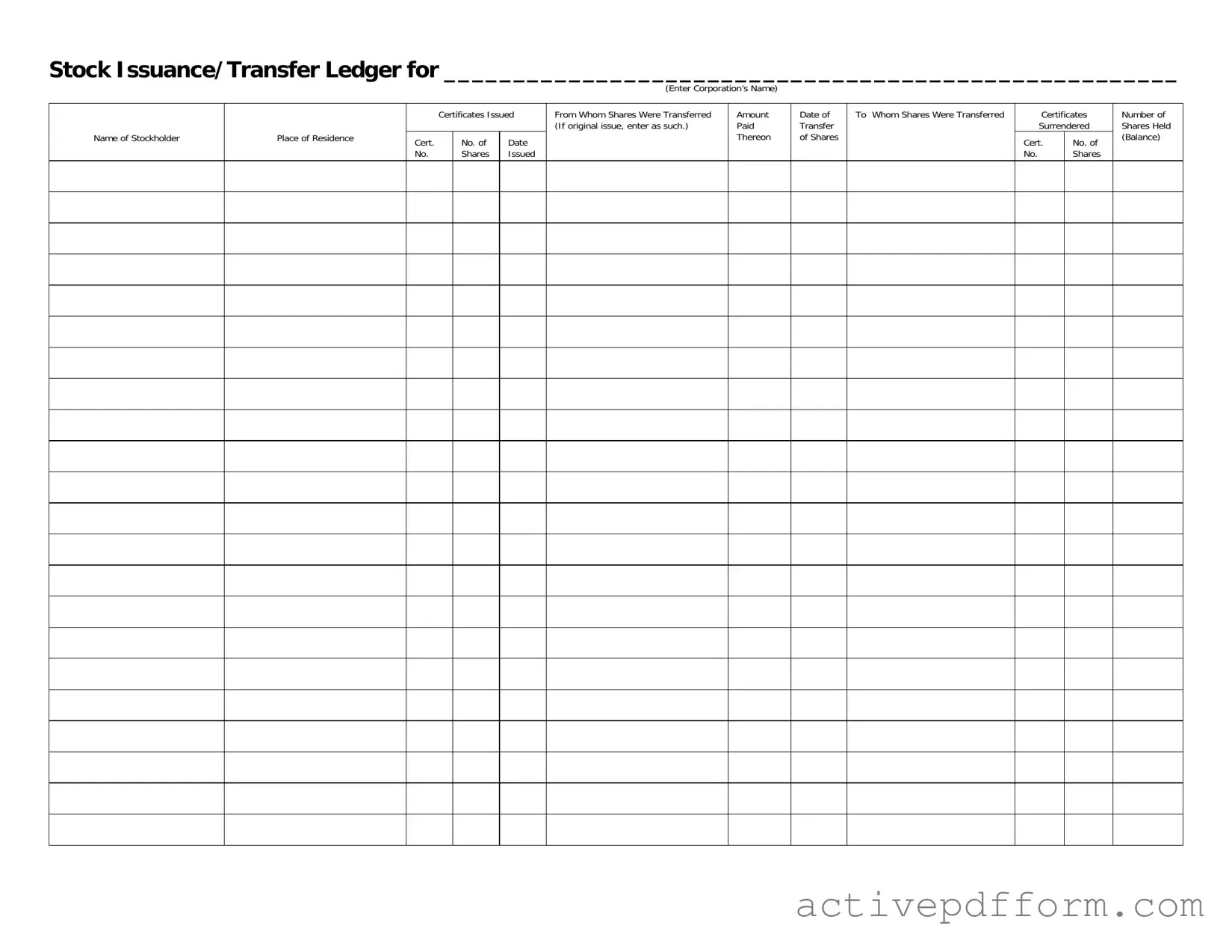What is a Stock Transfer Ledger form?
The Stock Transfer Ledger form is a document used by corporations to track the issuance and transfer of stock shares. It records essential details about stockholders, shares issued, and the transactions related to stock transfers.
Why is the Stock Transfer Ledger important?
This ledger is crucial for maintaining accurate records of stock ownership. It helps ensure compliance with legal requirements and provides transparency for shareholders and potential investors regarding ownership changes.
What information is required on the Stock Transfer Ledger form?
You need to provide the corporation’s name, stockholder's name, place of residence, certificate numbers, dates of issuance, amounts paid, and details about transfers, including the names of the parties involved and the number of shares transferred.
How do I fill out the Stock Transfer Ledger form?
Start by entering the corporation's name at the top. Then, list each stockholder's information in the designated fields, including the number of shares issued and transferred. Make sure to include all relevant dates and certificate numbers to ensure accuracy.
Who should maintain the Stock Transfer Ledger?
The corporation's secretary or a designated officer typically maintains the Stock Transfer Ledger. This person is responsible for ensuring that all entries are accurate and up-to-date.
How often should the Stock Transfer Ledger be updated?
Updates should occur whenever stock is issued or transferred. This ensures that the ledger reflects the most current ownership information and complies with legal obligations.
What happens if there is an error in the Stock Transfer Ledger?
If an error is discovered, it should be corrected immediately. Document the correction clearly, noting the original entry and the change made. This maintains the integrity of the records.
Can electronic records be used instead of a physical Stock Transfer Ledger?
Yes, electronic records are acceptable as long as they meet legal standards for accuracy and security. Ensure that electronic systems are reliable and that backups are regularly maintained.
What are the consequences of not maintaining a Stock Transfer Ledger?
Failure to maintain a proper Stock Transfer Ledger can lead to legal issues, including challenges to stock ownership and potential penalties from regulatory bodies. It is essential to keep accurate and comprehensive records.
Where can I obtain a Stock Transfer Ledger form?
Stock Transfer Ledger forms can typically be obtained from legal stationery suppliers, corporate service providers, or online legal document resources. Ensure that the form complies with your state’s requirements.

